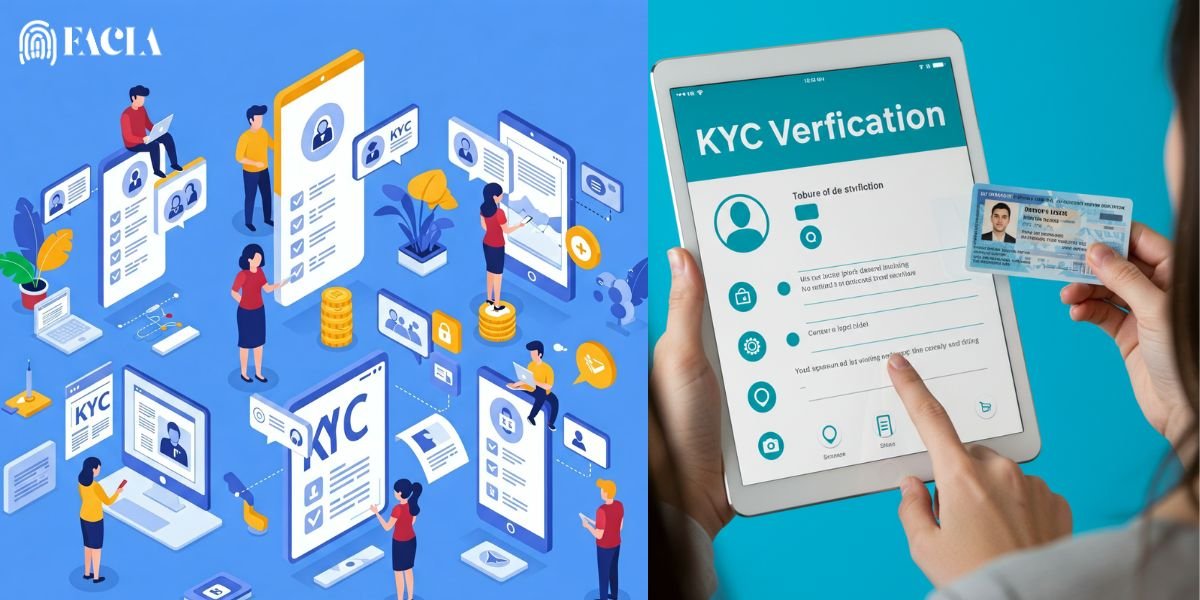What is Liveness Detection and Why Does It Matter?
In an age where digital interactions define our lives, from banking to social media, verifying who you are online has never been more critical. This is precisely the stage at which liveness detection becomes essential. Simply put, liveness detection is an advanced technology designed to confirm that the person interacting with a biometric system—typically a facial recognition system—is a real, live human being, and not a static photograph, an altered video, or an advanced 3D mask.
Why does this matter so profoundly? Because without it, our digital identities are alarmingly vulnerable. Fraudsters constantly seek new ways to exploit systems, and the rise of synthetic media, including deepfakes, has amplified this threat. A recent report by Signicat highlighted a staggering 2,137% increase in deepfake fraud attempts over the last three years. This alarming statistic underscores the essential role liveness detection plays in preventing identity theft, account takeovers, and financial losses across all industries. It acts as a vital gatekeeper, ensuring that only genuine individuals gain access, thereby fostering trust and upholding security in the digital realm.
Active Liveness Detection: How User Interaction Enhances Security
When you hear “liveness check,” your mind might first jump to active liveness detection. This method, as its name implies, requires the user to perform specific, interactive actions in front of the camera to prove their presence. Think of it as a digital challenge-response mechanism.
Common actions include:
- Blinking
- Nodding or turning the head
- Smiling or changing facial expressions
- Repeating a series of random words or numbers
The system processes and evaluates these reactions and motions instantly. Because these actions are dynamic and often randomized, they are much harder for fraudsters to replicate using static images or even pre-recorded videos. This direct user involvement adds a robust layer of security, making it particularly effective against simpler spoofing attacks like printed photos or basic video replays. The intent is to ensure that the “face” being presented is not just an image, but a genuinely responsive human.
Passive Liveness Detection: Seamless Verification in the Background
In contrast to its active counterpart, passive liveness detection operates silently and seamlessly in the background, requiring no explicit action from the user. Imagine a process where you simply present your face to the camera, and the system instantly determines your liveness without any prompts. This is the hallmark of passive liveness.
How does this advanced facial liveness detection work? It leverages sophisticated artificial intelligence (AI) and machine learning algorithms to analyze a multitude of subtle, involuntary biological cues. These indicators are incredibly difficult to spoof and include:
- Skin texture and subtle micro-movements: Real skin has unique textures and minute movements from blood flow that are absent in photos or masks.
- Light reflection and shadows: The way light interacts with a real 3D face, creating dynamic reflections and shadows, is distinct from a flat image or a rigid mask.
- Depth perception: Advanced algorithms examine the facial 3D structure to distinguish it from flat, 2D images.
- Gaze and pupil dilation: Subtle changes in eye movements and pupil size can indicate a live presence.
The primary appeal of passive liveness lies in its superior user experience. It reduces friction significantly, leading to higher conversion rates in critical processes like customer onboarding. This method aligns well with the ISO/IEC 30107-3 standard for Presentation Attack Detection (PAD), which sets benchmarks for robust anti-spoofing performance. While it requires more complex underlying technology, its non-intrusive nature makes it a preferred choice for many modern applications.
Active vs. Passive: A Head-to-Head Comparison
Choosing between active and passive liveness detection often comes down to balancing security needs with user experience goals. Here’s a comparative look:
| Aspect | Active Liveness Detection | Passive Liveness Detection |
| User Interaction | Required (e.g., blink, nod, smile) | Not required; operates invisibly in the background |
| User Experience | Can introduce friction, slow it down, and create potential for user dropout | Seamless, fast, frictionless; optimizes onboarding rates |
| Security | Strong against basic spoofing (photos, videos) | Highly resilient against advanced spoofing (deepfakes, 3D masks) |
| Speed | Slower due to user prompts and response time | Faster, often near-instantaneous verification (e.g., Keyless claims under 300ms) |
| Complexity | Simpler to deploy in terms of user engagement and interaction | More technologically complex, relying on advanced AI/ML algorithms |
| Spoofing Resistance | Vulnerable to sophisticated deepfakes and advanced presentation attacks | Robust due to analysis of subtle, hard-to-replicate biometric signals |
| Common Use Cases | High-security, regulated environments (e.g., banking KYC) | High-volume, consumer-facing applications (e.g., mobile onboarding, e-commerce) |
Real-World Applications: Where Each Liveness Type Shines
The choice between active and passive liveness detection often depends on the specific use case, regulatory requirements, and the desired balance between security and user convenience.
Active Liveness Detection is particularly effective in situations that require the highest levels of assurance and regulatory compliance:
- Financial Services: For rigorous Know Your Customer (KYC) and Anti-Money Laundering (AML) checks in online banking, loan applications, and high-value transactions, active checks provide an explicit audit trail of user interaction.
- Healthcare: Ensuring secure patient identity verification for accessing electronic health records or engaging in telehealth consultations where data integrity is paramount.
- Government and Law Enforcement: Used in digital ID programs, border control, and citizen services to prevent impersonation on a mass scale.
Passive Liveness Detection, with its emphasis on speed and ease-of-use, is ideal for:
- E-commerce and Retail: Preventing account takeovers and payment fraud without adding friction to the customer journey, crucial for reducing shopping cart abandonment.
- Telecommunications: Streamlining secure user verification during SIM activations and account registrations, where quick onboarding is key.
- General User Onboarding: Any industry where a smooth and rapid enrollment process is essential for user engagement and retention, such as social media platforms or online gaming.
- Everyday Device Unlock: Think of your smartphone’s face unlock feature; this is a prime example of passive facial liveness detection at work.
Combating Modern Fraud: Liveness Detection Against Deepfakes
The rise of generative AI has ushered in a new era of sophisticated fraud, with deepfakes leading the charge. These hyper-realistic synthetic images and videos can mimic a person’s appearance and voice with frightening accuracy, posing a direct threat to traditional biometric liveness checks.
While some active liveness methods can be outsmarted by advanced deepfakes that simulate blinks or head movements, passive liveness detection is proving to be a more formidable defense. Why? Because deepfakes still struggle to flawlessly replicate the subtle, physiological cues that passive systems analyze, such as:
- Micro-expressions: The minute, involuntary facial muscle movements inherent to living beings.
- Sub-dermal blood flow: The slight color changes in skin as blood circulates.
- Authentic light interplay: The precise way light reflects off and refracts through real human skin in three dimensions.
By focusing on these deeper, harder-to-forge biological signals, passive liveness offers a more robust shield against AI-driven manipulation. Many leading providers are now combining passive liveness with other techniques like injection attack detection (which identifies when synthetic biometric data is directly fed into a system, bypassing the camera) to create multi-layered defenses. As fraud tactics continue to develop, the protective technologies must advance as well.
Choosing Your Solution: Key Factors for Optimal Liveness
Deciding between active and passive liveness detection isn’t a one-size-fits-all answer. It’s a strategic decision that should align with your organization’s unique requirements and risk profile. These are the main points to take into account:
- Risk Appetite: How much risk of fraud are you willing to tolerate? High-risk environments often lean towards solutions offering the strongest anti-spoofing capabilities.
- User Experience (UX) Priorities: Is a frictionless, lightning-fast onboarding process your top priority, or is a slightly more involved (but transparently secure) experience acceptable?
- Regulatory Compliance: Do industry-specific regulations (like KYC/AML in finance) dictate a particular level of user interaction or verification method?
- Budget and Integration: Consider the cost implications and the complexity of integrating the chosen solution with your existing systems and infrastructure.
- Target Audience: Are your users tech-savvy, or do they prefer minimal interaction? Accessibility for users with disabilities should also be a consideration.
Often, the most effective strategy involves a hybrid approach, dynamically adjusting the liveness check intensity based on the perceived risk of a transaction or user. This allows businesses to apply rigorous active checks for high-value operations while maintaining a seamless passive experience for routine authentications.
The Evolution of Liveness: What’s Next in Anti-Spoofing?
The landscape of liveness detection is anything but static. As fraudsters innovate, so too do the technologists dedicated to securing our digital world. The future of anti-spoofing is marked by several exciting advancements:
- Hybrid Solutions: More intelligent systems that seamlessly blend passive and active checks, prompting for interaction only when the passive system detects anomalies or a higher risk.
- Multi-Modal Biometrics: Combining facial liveness with other biometric modalities like voice, behavioral patterns (e.g., typing cadence), or even passive gaze tracking to create even stronger, layered defenses.
- Continuous Liveness Monitoring: Moving beyond a single point-in-time check to continuously monitor a user’s liveness during a session, providing ongoing assurance.
- AI and Machine Learning Refinements: Constant training of AI models on vast and diverse datasets, including known spoofing attacks, to improve detection accuracy and adapt to new threats in real-time.
- Hardware-Assisted Liveness: Leveraging specialized hardware like infrared sensors or 3D depth cameras found in newer devices to gather richer biometric data, making spoofing significantly harder.
These innovations are continuously pushing the boundaries of what’s possible, ensuring that liveness detection remains at the forefront of digital security.
For more in-depth information on liveness detection, biometric verification, and related security topics, explore the insightful resources and helpful blogs available on facia.io.
Summary
Liveness detection is no longer a luxury but a fundamental necessity in our interconnected world. Both active liveness detection and passive liveness detection offer distinct advantages, each playing a crucial role in the broader anti-spoofing ecosystem. While passive liveness is rapidly gaining traction due to its unparalleled user experience and growing resilience against sophisticated attacks like deepfakes, active liveness continues to provide a strong, interactive defense where explicit user verification is paramount. The worldwide market for liveness detection software is expected to expand from nearly USD 1.8 billion in 2023 to about USD 6.5 billion by 2033, reflecting the growing dependence on such technologies. The ultimate goal remains the same: to create a secure, frictionless digital environment where only genuine individuals can access their accounts and data, fostering trust and combating fraud effectively.




